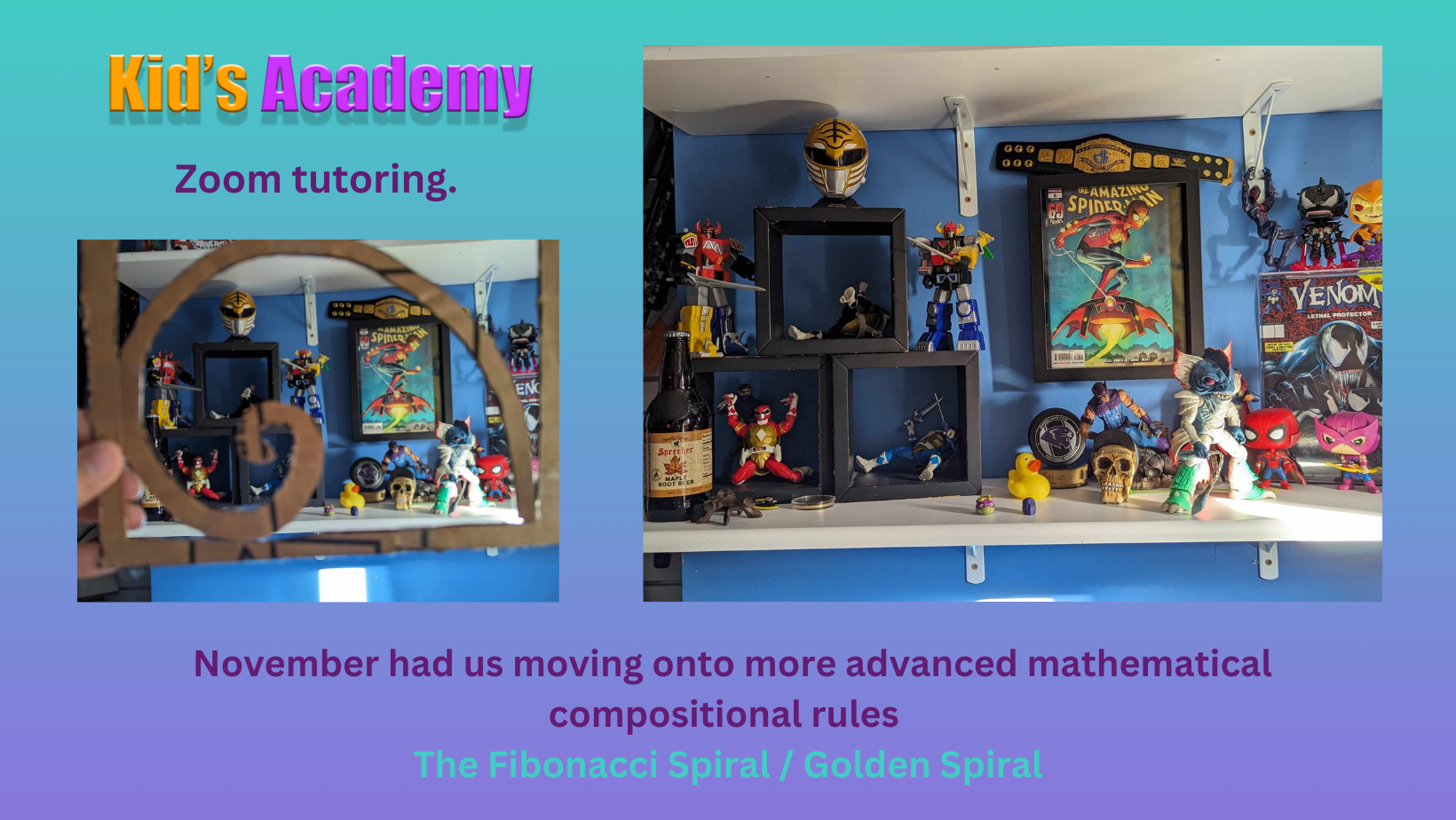This month I got to help 2 of my tutees begin to master advanced composition involving elements of science and mathematics.
The joy of art and photography is they make academic subjects fun!
Having previously mastered the rule of thirds, it was time to move on to Golden Ratios.
We began November looking at Fibonacci. Finding out what his sequence is and looking at how this creates patterns in nature.
Having found as many examples in real life and with web research as possible! This took us from roses and sunflowers to pineapples, shells, and even galaxies.
Next we looked at the Fibonacci sequence as growing boxes creating a perfect grid and how the Golden Spiral lays over it perfectly to lead the eye to a single main focal point.
How do you learn this if your phone camera doesn't overlay a grid?
Well, obviously it's time to get handy!
1. Print
2. Stencil it on cardboard
3. Cut it out!
Following this we used our Golden Spirals to pre-frame our photographs so we had a tangible way to see the composition BEFORE taking the photographs.
Once this was mastered we moved on to the other applications of the Golden Ratio in the form of the Golden Grid (Phi Grid) and Golden Triangles. (I'll leave those for you to work out for yourself! Got to have something to research!)
By the end of the month we even had a quick guide for when to utilise each of the compositional tools depending upon:
- How many focal points are in a scene
- How far apart they are spread
- Whether the scene has softer curved lines or is more angular and linear!
We even covered some literacy, reading, articulation and presentation skills, graphic packages and safe searching of the web!
P.s. Did I tell you this was with a 10 and a 12-year-old?
Imagine the results you might get with a teenager or an adult?
Tutoring from 8+ years old.



